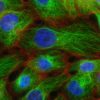The term “gain of function” is often taken to refer to research with viruses that puts society at risk of an infectious disease outbreak for questionable gain. Some research on emerging viruses can result in variants that gain the ability to infect people but this does not necessarily mean the research is dangerous or that it is not fruitful. Concerns have focused on lab research on the virus that causes bird flu in 2012 and on the virus that causes COVID-19 since 2020. The National Institutes of Health had previously implemented a three-year moratorium on gain-of-function research on certain viruses, and some U.S. legislatures have proposed bills prohibiting gain-of-function research on “potentially pandemic pathogens.”
The possibility that a genetically modified virus could escape the lab needs to be taken seriously. But it does not mean that gain-of-function experiments are inherently risky or the purview of mad scientists. In fact, gain-of-function approaches are a fundamental tool in biology used to study much more than just viruses, contributing to many, if not most, modern discoveries in the field, including penicillin, cancer immunotherapies and drought-resistant crops.
As scientists who study viruses, we believe that misunderstanding the term “gain of function” as something nefarious comes at the cost of progress in human health, ecological sustainability and technological advancement. Clarifying what gain-of-function research really is can help clarify why it is an essential scientific tool.
What is gain of function?
To study how a living thing operates, scientists can change a specific part of it and then observe the effects. These changes sometimes result in the organism’s gaining a function it didn’t have before or losing a function it once had.
For example, if the goal is to enhance the tumor-killing ability of immune cells, researchers can take a sample of a person’s immune cells and modify them to express a protein that specifically targets cancer cells. This mutated immune cell, called a CAR-T cell thereby “gains the function” of being able to bind to cancerous cells and kill them. The advance of similar immunotherapies that help the immune system attack cancer cells is based on the exploratory research of scientists who synthesized such “Frankenstein” proteins in the 1980s. At that time, there was no way to know how useful these chimeric proteins would be to cancer treatment today, some 40 years later.
CAR-T cell therapy involves giving a patient’s immune cells an increased ability to target cancer cells.
Similarly, by adding specific genes into rice, corn or wheat plants that increase their production in diverse climates, scientists have been able to produce plants that are able to grow and thrive in geographical regions they previously could not. This is a critical advance to maintain food supplies in the face of…



